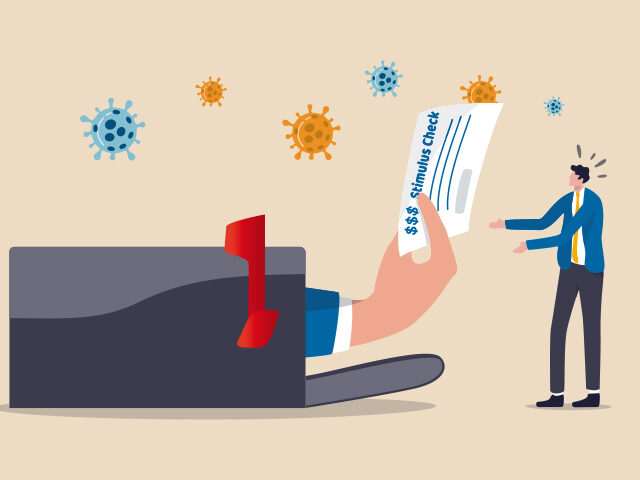Pandemic Stimulus Made Persistent Inflation
Why has inflation proved to be so much more persistent than expected?
A recent paper from three research fellows at the National Bureau of Economic Research (NBER) argues that analysts underestimated the impact of deficit-funded government stimulus on household spending. During the pandemic, the government transferred around 15 percent of Gross Domestic Product to the household sector, financing this by borrowing funds.
This helped create a huge increase in personal saving, as the chart below shows. It was not all transfers from the government, of course. Spending was constrained by shortages and by the closing of a lot of service businesses, such as restaurants, theaters, and stadiums. Some Americans likely also slowed spending as a precautionary measure in light of the sudden downturn in the economy.

Personal consumption expenditures as a share of Gross Domestic Product fell to their lowest levels since 2001. But then they rose rapidly as people increased their purchases of household goods, furniture, electronics, and the like.

A Five Year Journey to the One Percent
In their paper “The Trickling Up of Excess Savings,” economists Adrien Auclert, Matthew Rognlie, and Ludwig Straub argue that the stock of excess savings fueled inflation—and continues to fuel inflation. Everyone’s spending is someone else’s income. So, when households spend stimulus payments, the money does not leave the economy, it just gets transferred. So, stimulus checks get spent over and over again.
Eventually, the money stops circulating as quickly because it “trickles up” to wealthier households, who have a lower propensity to spend the additional income. But this trickling-up process takes quite a long time. The NBER economists estimate it takes five years for the funds to fully trickle up into the bank accounts of the wealthy.
Excess Demand Responsible for Most of Our Inflation
A research paper from the New York Fed recently concluded that increased demand accounts for two-thirds of inflation—and fiscal stimulus was responsible for half or more of the increase in demand. A paper from an economist at the European University Viadrina Frankfurt estimates that excess demand was responsible for 75 percent of inflation in the United States — with the remainder created by supply constraints.
This is very different from what the experts were predicting two years ago. Here’s the conclusion of a blogpost from the New York Fed’s Liberty Street Economics from April 2021:
The bottom line from these three sets of considerations is that, although large by historical standards, the savings accumulated by U.S. households during the pandemic do not appear to be “excessive” when set against the extraordinary need of many American families and the unprecedented government intervention to support them. It is certainly possible that some of these savings will pay for extra travel and entertainment once the COVID-19 nightmare is behind us, but our conclusion is that the resulting boost to expenditures will be limited. This conclusion does not rule out a strong economic recovery from the virus shock. It only implies that spending out of excess savings won’t be one of its major drivers.
Importantly, this was written by four prominent economists: Florin Bilbiie (a professor of economics at the University of Lausanne, Switzerland), Gauti Eggertsson (Brown University), Giorgio Primiceri (Northwestern), and Andrea Tambalotti (NY Fed). With that sort of thinking coming from some of our most exalted economists, no wonder the Fed was blindsided by inflation.
Jobs Report Delayed
The Labor Department will not release the February jobs report on the first Friday of the month this week. It is instead scheduled to come out the following Friday, March 10. While payroll growth is unlikely to be a repeat of January’s epic 517,000, the jobless claims numbers throughout February indicate that demand for labor remains red hot.
Unfortunately, this means we will not have the February numbers when Fed Chair Jerome Powell visits Capitol Hill next week for the semi-annual Humphrey-Hawkins testimony. So we will likely have to wait until the press conference two weeks later to get Powell’s reaction to the February labor market. In fact, because the Fed’s blackout period starts on Saturday, March 11, we probably will not get any reaction to the numbers from Fed officials until after the Federal Open Market Committee meeting on March 21-22.

COMMENTS
Please let us know if you're having issues with commenting.